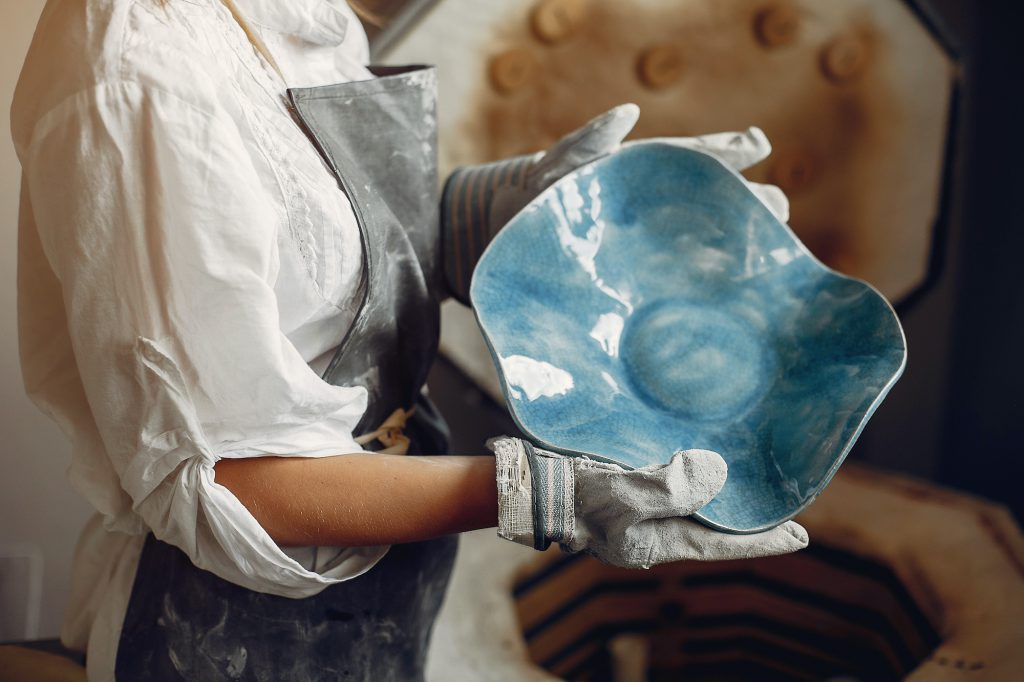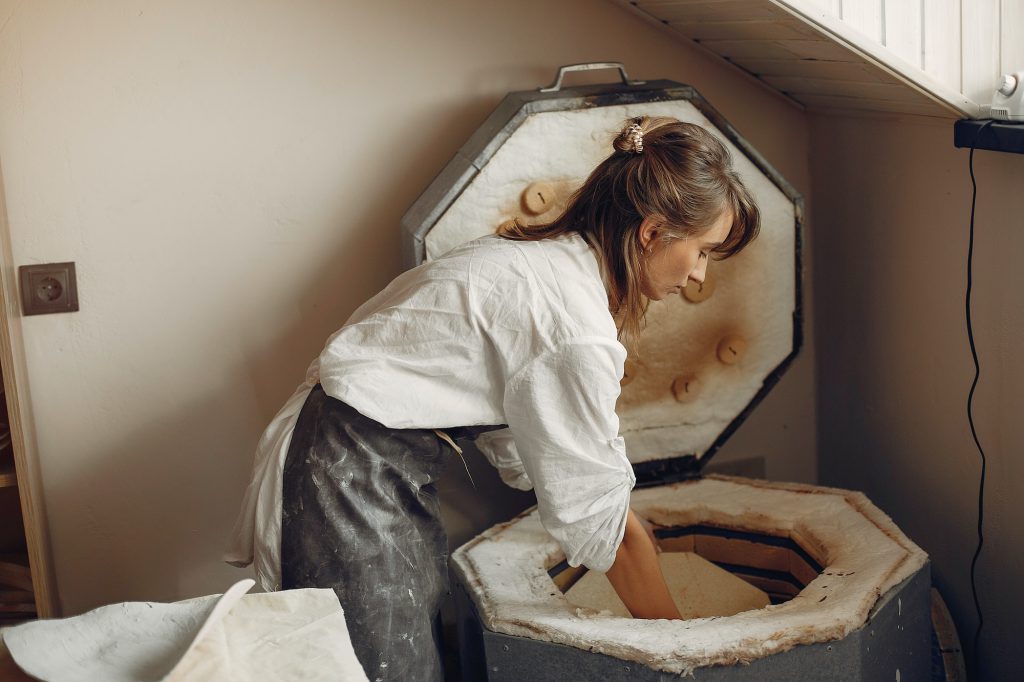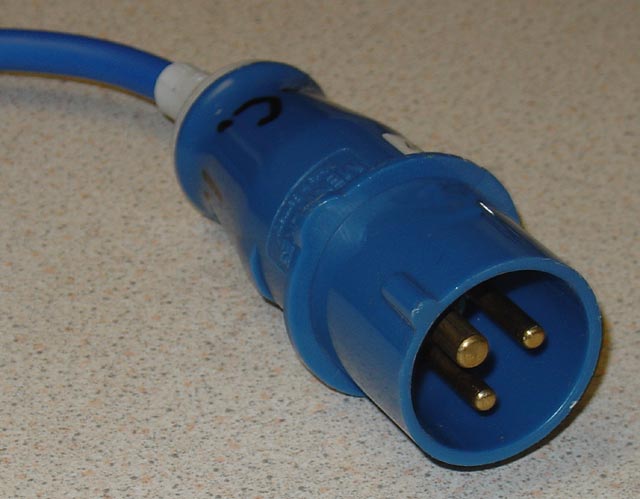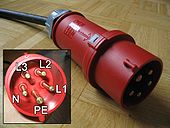Has the time – delicate – come when you need to buy a ceramic kiln? We have compiled for you this small guide to the reasoned purchase of a ceramic kiln.
Ceramic kilns have three main features that you should consider when making your decision: the structure, the type of heating, and the regulation.

That’s what we tell you about in this post:
- The structure of the ceramic kiln
Front-opening or pit-opening ceramic kiln?
What kind of insulation do you need?
Where to place the oven - Heating
The uniformity of heating
How does power affect the size of the ceramic kiln? How much does it consume?
Resistances and plugs - Adjusting
- What is needed besides the kiln is needed for ceramic firing?
Refractory plates, shelves, columns.
The structure of the ceramic kiln
Front-opening or pit-opening ceramic kiln?

The first decision you need to make is what kind of oven opening do you need: front opening or top opening, i.e., well? To choose you will have to consider where you can place the oven and from the type of items to be baked.
- The square-shaped front-opening and front-loading oven can be placed on a table or stand, so it will be more convenient for you if you need to insert and extract various pieces.

Our recommendations: at Hobbyland you can find lots of them, try looking at Sigma Ovens for example, you can find them from 30 liters, 50 liters e 70 liters (but also 100 and 150): they reach a temperature of 1100°C and have a fiber interior lining.
Also front-opening, but with a maximum temperature of 1300°C and a brick interior, we recommend Nabertherm’s N-series ovens: N40/E, N70/E and N100/E.
- The pit or top-loading kiln is cylindrical in shape, so it allows you to use space more rationally if you are making round objects. It also offers more uniform internal heating, but we will discuss this in more detail when we talk about heating.

Our recommendations: as pit ovens we exclusively offer Nabertherm ovens, they are the best on the market. The best-selling sizes are the 45 and the 60-liter. The Top 60 oven is available in 2 versions: 1200°C with max consumption of 2.9 kw or 1320°C with consumption of 3.6 kw. There are also larger formats (in this case, however, they are suitable for professional laboratories with adequate electrical installations), you will find them all among the top-loading ovens.
What kind of insulation do you need?
The second decision concerns the insulation material of your next kiln: brick or ceramic fiber?
- Ceramic fiber insulation allows lighter and cheaper structures. Conversely, over the years, with heavy use, it deteriorates, with contraction in size that you can still compensate for with easy plugging.
- Refractory bricks have slightly less insulating power than the same thickness in ceramic fiber, but they last longer. A non-secondary element: they are inert materials and do not release particles.
When they deteriorate (but only after several years of use) they will flake, and you will have to replace them. Compared to ceramic fiber they are more brittle, so you will have to be careful of bumps.
Where to place the oven
The ideal location for a ceramic kiln is in a room where good ventilation is ensured: during firing or glazing the kiln releases a minimum amount (but minimum really!) Of substances. They are not dangerous, But always better to ensure that the room is well ventilated.
Still on the subject of aeration: a fiber-ceramic oven emits smoke and a strong smell when first fired. Don’t be frightened: it happens only at the first firing, because some organic binders in the fiber burn once a certain temperature is exceeded. Therefore, it is important that at the first firing all windows remain open and you have the firing program completed.
You can also put it outside, but always take care that it is in a sheltered area and that it is well sealed when you are not using it, especially if we are talking about brick kilns, which absorb moisture like sponges. If you have a brick kiln and you see that it is damp, always dry it before firing material.
Heating
Another crucial aspect in choosing your ceramic kiln concerns the working temperature. This choice has an impact on size and cost even with the same amount of electrical power required.
As far as temperatures are concerned, there are two classes: kilns that develop up to 1,100°C and kilns of 1,250° or more.
Depending on the materials and the processing you need to do, you will need different temperatures:
- Third fire decoration: up to 800°C
- Earthenware and related glazes: between 960° and 1,030° degrees
- Soft earthenware and related glazes: between 960° and 1,070° degrees
- Hard clay: between 1,050° and 1,150° degrees
- Stoneware: between 1,200 degrees and 1,300 degrees (this is a material with strong vitrification and impermeability)
- Porcelain: between 1,200 degrees and 1,300 degrees.
The uniformity of heating
If you are aiming to buy a ceramic kiln that has uniform heating, we recommend that you go for one that allows the heating elements to be arranged on all the inner sides of the kiln, thus, generally in sump kilns, whereas this is not always possible in the more “economical” front-loading kilns.
How does power affect the size of the ceramic kiln?
A furnace that reaches a maximum temperature of 1,250°C with 3.2kw of power input cannot exceed 60 lt in volume. Ovens that produce a maximum of 1,100°C can reach 80 lt.
One of the most frequently asked questions: I have a 3 Kw contract, will I be able to use the furnace without my power going out?
If you buy an oven that has a power rating under 3kw, there is no problem: the important thing is that you do not use other appliances that draw a lot of power at the same time (kitchen oven, vacuum cleaner, etc.).
Note: Considering, for example, nighttime use, with only a medium-power refrigerator running and little else, a 3kw oven is regularly supported.
How much does a firing cycle cost, in terms of electricity consumption?
We cannot be very precise in this respect, because it depends on the oven, the firing program, and energy costs, but to give an approximate idea, a 60-liter oven consumes 5 to 10 euros per firing cycle.
Resistances and plugs
Electric ovens are heated by electric heating elements, the best being of the Kanthal type. They can have different arrangements inside the oven: completely encapsulated in the insulation, or housed in visible cavities and arranged on ceramic supports, if necessary. The difference is most noticeable in case of failure: the exposed ones can be replaced, while the heating elements built into the insulation cannot, so you’ll have to replace the whole baking chamber.
Furnaces up to 3.2kw usually come with a 16A Schuko plug or a 16A CEI plug.
You will then necessarily have to equip the electrical system with Schuko wall outlet, with wire harnesses to the meter of at least 2.5 sq. mm, sectioned by a 16A circuit breaker located locally in a small control panel.




WARNING. ABSOLUTELY AVOID USING INAPPROPRIATE EXTENSION CORDS OR ADAPTERS .
Furnaces with power ratings above 3.2kw usually come with three-phase CE plugs, which can be 4- or 5-pole and need the resulting electrical wiring. Power meters in homes are usually 3kw, with a 10% tolerance, so they can supply a maximum of 3,300w. The tolerance is usually a 33% cutoff for a few minutes. For the past few years it has been possible to request 0.5kw power increases beyond 3kw. We therefore advise you to check with your supplier.
Adjusting
The heart of the ceramic kiln is the thermocomputer: it comes with multiple programs, which you can store for different types of firing and materials.
The thermocomputer manages the control of the heating elements with power elements that can be traditional(contactors) or modern solid-state relays, which have quieter and more precise regulation.
How does the thermocomputer work?
The thermocomputer is in charge of modulating the power to follow a hypothetical firing curve: for firing small and medium-sized objects, a simple curve of 4 breaks is sufficient.
Our advice: in most cases, a “simple” computer such as Naberteherm’s B500 or a UC51 from Sigma furnaces will suffice.

Nabertherm’s new B500 computer has a color touchscreen and can be connected via Wi-Fi to the MyNabertherm app to monitor the furnace remotely.
If you have objects of higher mass or size, you will need to consider more complex curves at least 3-4 breaks both uphill and downhill.
What else is needed besides the oven?
In addition to the oven, we recommend that you purchase of a refractory plate kit: these are high temperature resistant shelves that allow you to stack baking items on multiple layers (as you would in a kitchen oven).
You can space the shelves apart with refractory columns; you can find them in different sizes. If your shelf is round, we recommend using at least 3 small columns, while if your shelf is square, better to use 4.
Hobbyland has lots of shelf sizes available , you can find them in this section, but if you are in doubt about which one is right for your oven contact us and we will advise you.
Another tip: If you have applied glaze to your baking pieces, keep in mind that during baking it could drip onto the shelf and ruin it irreparably. That’s why we advise you to protect your shelves by applying a special protectant that will create a barrier.
Have you chosen your ceramic kiln?
I hope you have a clearer idea now. At Hobbyland you’ll find a wide selection of all the ceramic kilns we’ve described: front-loading or cockpit, of various sizes, for all processes, for various temperatures, and in various price ranges. You’ll also find everything you need to take care of your kiln: glass-ceramics and insulators, sealants, spare parts and bases, shelves and stands.
Inside each product sheet you will then find lots of questions from people who have faced the choice of oven before you, if you have any doubts see if there is already an answer, or ask your question and we will answer it!
